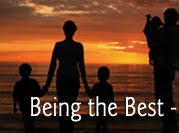Compiled by: Sheila George, RMR-Leadership Council and Edie Elting, RMR-Leadership Council
History
• Prior to WWII, women were primarily homemakers – stayed at home and raised their families. During WWII large numbers of them took jobs in factories, to support the war effort and keep the economy moving. After the war they returned home and yielded their jobs to the men returning from the war. There was massive disillusionment as they struggled to figure out where they fit in.
• In the 60’s and 70’s, along came the Women’s Lib movement. It popularized women working, and made it socially acceptable for women to work outside the home and gained them almost equal pay.
• Then came the career woman era and the technology book of the 80’s and 90’s. Women were moving up the corporate ladder in large numbers. They were beginning to struggle trying to balance career and family responsibilities. The superwoman myth was just that… a myth.
• In the new millennium, women were again disillusioned – they started to recognize the impact working had on their children, families and quality of life, but also realized their families needed that second income just to make ends meet. Some women found themselves in a situation where they needed to be able to provide for themselves financially. That’s where we find ourselves today.
The poor are predominately female
• In 2002, 56% of the poor in the US were women, compared to 44% men.
• 90% of adult welfare recipients are women, (Legal Momentum for Advancing Women’s Rights).
• 50 % of poor families are headed by single women, and only 8% by single men.
• 47% of the women over the age of 50 are single and therefore responsible for their own financial well-being.
• In the first year following a divorce, a woman’s standard of living drops 74%. The impact on her and her children can be devastating as they struggle to adjust to a whole new standard of living.
• The negative effect on children when mothers have to work outside the home cannot be ignored. Children suffer higher rates of poor performance in school, longer, chronic, and more frequent health problems, and higher incidences of delinquency.
• Children in school who are having the most problems are the ones whose parents are around home the least.
• In a sample of over 2,000 working mothers, welfare moms were significantly more likely to have at least 1 child with asthma and at least 1 child with a chronic condition.
• For every hour a parent works between 6 – 9 PM, his or her child is 16% more likely to score in the bottom quartile on math tests.
• The hours with the highest rates of children committing and falling victim to crimes is between 2 and 8 PM – between the time they get out of school and a parent gets home from work.
• The children of parents who work nights are 172% more likely to have gotten into trouble and been suspended from school.
• The Washington Post reports that almost one in four boys takes drugs – and this is apparently skyrocketing.
• Most US children are being raised in households where every adult works for a wage or salary. If the family only has one parent living at home, these children are raising themselves and are sent to school anyway when they’re ill.
• All of these problems are the result of too many children living in an “absent-parent home.”
As women age and can no longer work for a living, their situation becomes dire.
• 80% of female baby boomers are not going to be financially secure in their retirement, in fact, some of them will have to work until they’re 75 because of inadequate retirement savings and pensions.
• Right now, 58% of them have less than 10,000 dollars in retirement savings.
• 3 out of every four elderly people living in poverty are women. Most of them weren’t poor when their husbands were alive.
• With longer life expectancies than men, elderly women tend to live more years in retirement and have a greater chance of exhausting other sources of income.
• $9,408 dollars –the average annual social security income received by women 65 years and older in 2004. (That’s 784 dollars a month.)
• 46% of all elderly unmarried females receiving Social Security Benefits relied on Social Security for 90% of their income in 2004
• Elderly women are less likely than elderly men to have significant income from pensions other than Social Security
• Women generally receive lower pension benefits due to their relatively lower earnings
“Women are not prepared to take care of themselves financially. Especially as we get older, more and more of us are responsible for our own financial well-being – but we have no idea how to take on that responsibility.” - Kim Kiyosaki
Resources
• The Rich Dad series by Robert Kiyosaki – Rich Dad, Poor Dad; Retire Young, Retire Rich; the Cashflow Quadrant, et al.
• Rich Woman by Kim Kiyosaki is an excellent book for women or for the people who want to help women.
• http://www.nussentials.info/ - resources page link to more books, CDs, and webinars
Tuesday, March 16, 2010
Subscribe to:
Post Comments (Atom)
About Me

- Soraya
- Miami, FL, United States
- I have a lot to say.... strong opinions and deep understanding for truth... may justice always prevail!














































hey u hv a nice blog here,thk for sharing, nice to meet u, wish all the best to u 6-^
ReplyDelete